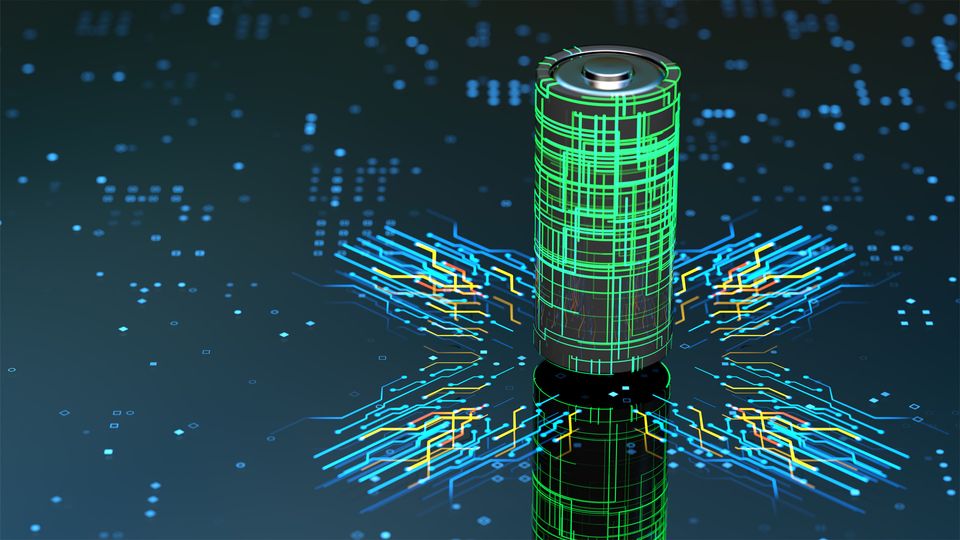
Netherlands Battery Market Poised for Significant Growth, Set to Reach USD 5 Billion by 2030
Share

According to Next Move Strategy Consulting, the Netherlands Battery Market, is forecast to experience substantial growth, reaching USD 5 billion by 2030. This represents a robust Compound Annual Growth Rate (CAGR) of 16% from by 2030. Driven by increasing energy demands, technological advancements, and government initiatives, the market is poised for expansion across various sectors including renewable energy, electric vehicles (EVs), and consumer electronics.
Download Free Sample: https://www.nextmsc.com/netherlands-battery-market/request-sample
Technological Advancements and Applications
A battery functions as an energy storage device, converting chemical energy into electrical energy through electrochemical cells. The Netherlands’ battery market is characterized by the use of primary and secondary batteries. Primary batteries, which are non-rechargeable, are commonly used in portable electronics, while secondary, or rechargeable batteries, are essential in applications such as smartphones, laptops, and electric vehicles.
The evolution of battery technology has been a game-changer, with continuous improvements leading to more efficient, long-lasting, and versatile batteries. These innovations have significantly impacted industries such as automotive, aerospace, and renewable energy. In particular, the rising adoption of Electric Vehicles (EVs) and solar energy systems is expected to further drive market demand.
Government Initiatives and Sustainability
The Netherlands’ government has been proactive in addressing the country’s energy challenges. As the demand for electricity increases, especially due to the growing reliance on weather-dependent renewable energy sources like wind and solar, innovative solutions such as Battery Energy Storage Systems (BESS) have become essential. These systems are designed to store excess power during low-demand periods and release it when demand spikes, stabilizing the grid and supporting sustainability goals.
A key initiative includes the EU's 2020 announcement of the Ten-Year Network Development Plan (TYNDP), which aims to boost the region’s climate and energy goals through better electricity transmission grid management. This push for electrification is further enhanced by increasing government incentives for clean energy adoption, creating new opportunities for the battery sector.
Inquire Before Buying: https://www.nextmsc.com/netherlands-battery-market/inquire-before-buying
Safety Concerns and Environmental Impact
Despite the promising market outlook, the industry faces certain challenges. Improper handling of batteries, especially in terms of disposal, poses significant risks to human health and the environment. The release of hazardous chemicals such as mercury, cadmium, lithium, and lead into the ecosystem through improper battery disposal can harm soil and water quality, as well as aquatic life. This environmental concern may act as a constraint on market growth, necessitating stronger regulation and more sustainable practices in battery use and disposal.
Introduction of Nano-Diamond Batteries (NDB)
A groundbreaking development in the Netherlands battery market is the increasing adoption of Nuclear Diamond Batteries (NDBs). These batteries, which harness energy from the radioactive decay of nuclear waste, offer extraordinary longevity and efficiency. NDBs are expected to reshape conventional battery concepts, with applications across automotive, aerospace, and electronics industries. The market is witnessing increased interest in these compact, adaptable, and cost-effective energy solutions, paving the way for future growth.
Competitive Landscape
The Netherlands Battery Market is highly competitive, featuring key players such as LG Chem Ltd., CATL, Samsung SDI Co. Ltd., BYD, SKI, ENVISION AESC Group Ltd., Gotion High Tech Co. Ltd., Primearth EV Energy Co. Ltd., China Aviation Lithium Battery Co. Ltd., and Panasonic Corporation. These companies are continually investing in research and development to advance battery technologies and meet growing consumer and industrial demands.
Market Segmentation
The market is categorized into various types, including lead-acid, lithium-ion, nickel-metal hydride, and more. These battery types serve a range of applications across residential, industrial, automotive, medical, telecom, power and utility, aerospace, and marine sectors. The increasing adoption of hybrid and electric vehicles, along with the demand for energy storage systems, is expected to be a key driver of market growth in the coming years.
Key Benefits of the Report
- Market Forecasts: The report provides a detailed quantitative analysis of the Netherlands Battery Market, including forecasts from 2023 to 2030.
- Market Trends: Insights into current and future market trends help identify investment opportunities.
- Competitive Analysis: The report includes a competitive landscape, analyzing market shares and strategies of key players.
- SWOT and Porter’s Five Forces Models: A deep dive into the strengths, weaknesses, opportunities, and threats facing the market.
- Value Chain Analysis: Clear insights into the roles of various stakeholders in the market.
Conclusion
The Netherlands Battery Market is set to experience remarkable growth in the coming years, driven by technological innovations, government initiatives, and a growing focus on sustainability. While there are challenges regarding environmental impacts and safety concerns, the introduction of new technologies like Nuclear Diamond Batteries offers exciting opportunities for the future. As the market expands, stakeholders across various industries will need to collaborate and innovate to fully capitalize on these emerging opportunities.